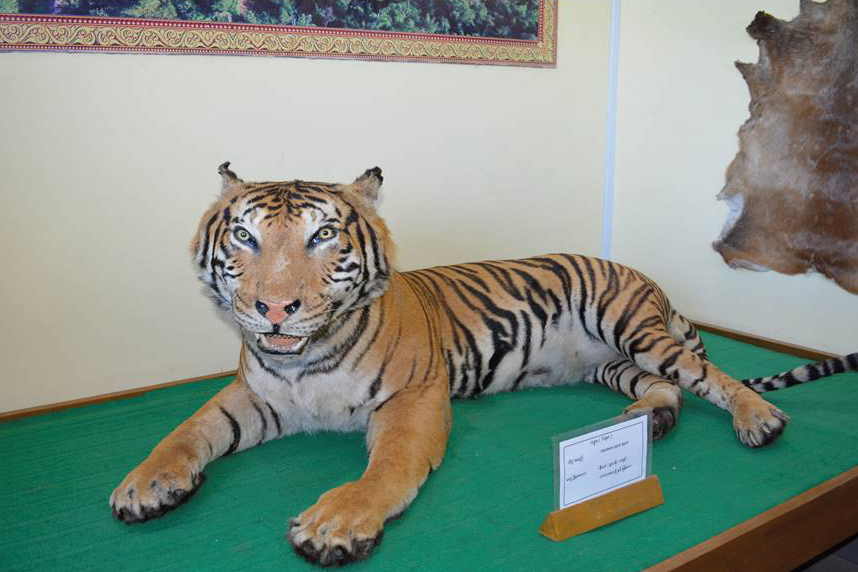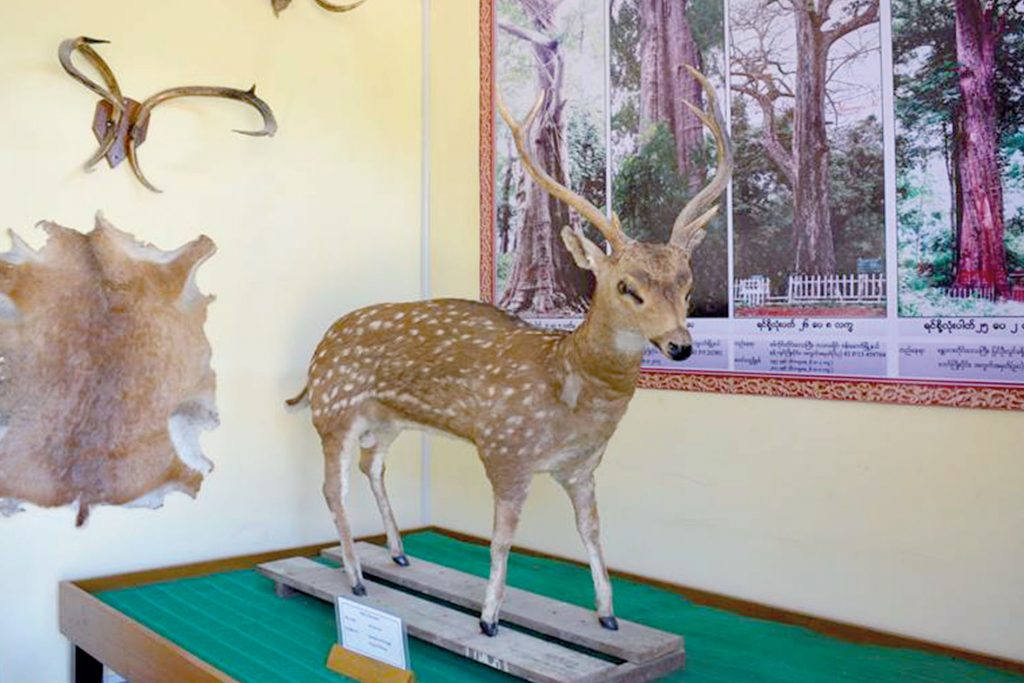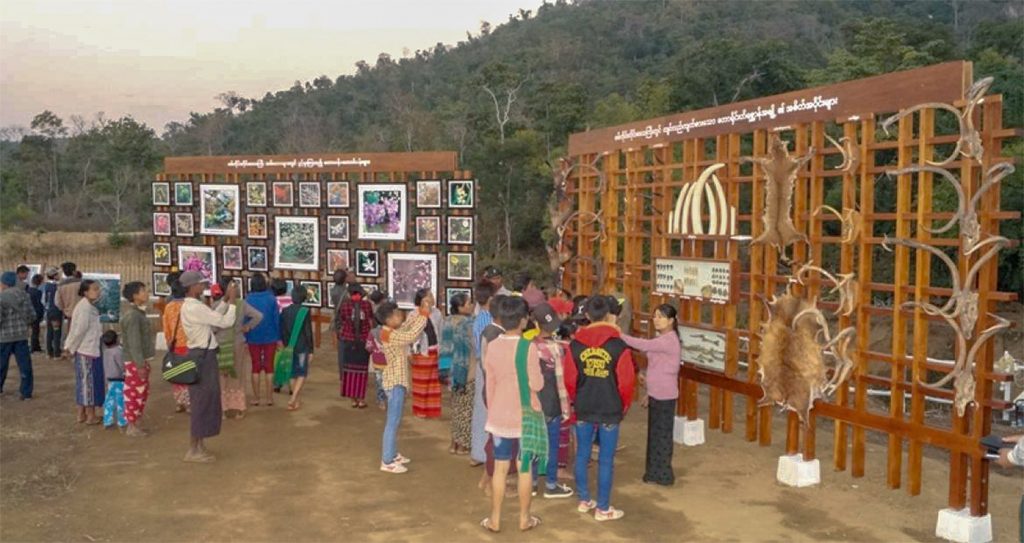27 May
Bat Cave Conservation Area
With the aim of developing tourism industry in Sagaing Region and to let globetrotters and local tourists know more of the little known natural beauties and environment of the region, the Sagaing Region government inaugurated the Bat Cave Natural Conservation Area and Park on 26 December 2018.
The cave in Kanbalu Township situated at an elevation of 689 feet above sea level is a habitat for bats. It is a natural area that possesses unique geological conditions. The cave interior was full of bats as well as natural beauties while the vicinity of the cave was full of traditional cultural heritages. As such the area must be safeguarded as a conservation area according to the law to maintain it in a sustainable way.

Bat Cave is located on Minwun mountain range. The main 2,290 feet high Zin Mountain on the Minwun mountain range stands out with its limestone caves in comparison to other hills and mountains in the area. The caves and lush green forest and foliage covered mountains stand well together and bats inhabit the caves.
Various species of plants thrive in Minwun mountain range. The jungles are of upper deciduous forest with teak, hardwood and various tree species including bamboo species. Various bio-diverse animal species such as elephants, boar, barking deer, bats, sambur, foxes, monkeys, squirrel, wild cats, reptiles, birds, butterflies and insects were also found.
Bats, with its forelimbs adapted as wings were not birds but mammals. In fact it is the only mammal that is capable of true and sustained flight. Different bat species have different diets that include insects, pollen, fruit, vertebrates and even animal blood. When not flying, bats hang upside down with their feet holding onto tree branches, a posture known as roosting. In general bats gave birth to single pup per litter but some bat species gave birth up to four pups. Lifespan of a bat is longer than other mammals of similar size and some bat species have about 30 years of lifespan. A bat can fly up to a speed of 60 miles an hour.
Bats that prey on insect consume up to 1,200 mosquitoes in an hour. A flock of bats consumes tons of insects in a single night. There are about 1,300 species of bat accountng for one fourth of all mammals and except for Antarctica, bats are scattered to all part of the world.
Potential for tourism industry
Millions of bats inhabit the caves on Zin Mountain. Visitors are used to seeing flocks of bats leaving the caves in search for food in the evening. Flora and fauna on the mountain including wild animals like elephants create good potential to establish ecotourism. That was why the Bat Cave Natural Conservation Area and Park open not only for the public to relax and recreate but for students to learn about nature. Thanks to the conservation area and park students will have the opportunity to study the ecosystem, diverse species of trees, plants and animals.
Training and teaching
The conservation area and park has training hall, hostels for trainees, mess hall, lodge, forestry and environmental museum, orchid farm, turtle farm and lakes as part of an education effort that plays a critical role in Sagaing Region environmental conservation. The conservation area and park conduct training courses such as environmental conservation, establishment of forest plantations and setting up of community-owned forests. A training course can accommodate up to 30 trainees.
At the opening ceremony of the Bat Cave Natural Conservation Area and Park, Sagaing Region Chief Minister Dr. Myint Naing urged local people to cooperate with authorities and relevant departments especially in supervising forests near the conservation area and park, re-establishing forests through educative talks and make efforts toward development of nature based tourism industry.
The conservation area and park was jointly developed by Sagaing Region government and Htawara Group of Companies. The place enable students, tourists and locals learn about the mutual interdependence of plants and species and importance of nature and environmental conservation. Htawara Group of Companies Chairman U Maung Ko spoke of being proud of his effort in carrying out environmental conservation and regional development.
Sagaing Region government coordinated with Ministry of Natural Resources and Environmental Conservation starting from 2016 to establish the Bat Cave Natural Conservation Area and Park. According to Sagaing Region Forest Department, 9,126 acres of Gongah forest reserve in Kanbalu Township, 13,660 acres of Baw forest area and 3,848 acres of Zin forest reserve were combined to set up the natural conservation area and park. Moreover approval was sought from Mandalay Region government to add 3,674 acres of Gongah forest reserve from Thabikkyin Township into the conservation area and park. That was why the Bat Cave Natural Conservation Area and Park came to be formed on 30,308 acres of land in total.

Environmental conservation area
Plans are underway to extend formation of more environmental conservation areas in Sagaing Region. Conservation areas will be formed in 1,792 acres of Bawdi Tahtaung natural forest reserve in Monywa Township, 60,046.71 acres of Zalon Hill national park in Bamauk Township, 316 acres of Sheinmakar sanctuary in Wetlet Township and 290,140.8358 acres of Mahamyaing wildlife sanctuary in Mawlaik, Kalewa and Mingin townships totalling 398,731.546 acres of land.
Existing natural environmental conservation areas are located on 346,639.39 acres of Alaungdaw Kathapa natural park, 531,546 acres of Htamanthi wildlife sanctuary, 1,647,982.96 acres of Hukaung Valley wildlife sanctuary, 63,977 acres of Chatthin wildlife sanctuary and 50,874 acres of Minwun Hill wildlife sanctuary. Currently Minwun Hill wildlife sanctuary is under review for reorganization.
According to Forest Resource Assessment FRA-2015 of Food and Agriculture Organization, Sagaing Region has forest coverage of 47.14 per cent. The Bat Cave Natural Conservation Area and Park will be part of the forest covered area of Sagaing Region that was maintaining and developing forest resources as well as developing the tourism industry. (Translated by Than Tun Aung)


